When you are working on a construction project, there are many different tools that you will need to get the job done. One of the most important is the framing nailer. This tool is used to drive nails into wood, and it is essential for any construction project.
Toenailing is an important carpentry skill. That every carpenter should be adept at a skill. In fact, for first-timers, it’s critical to study and practice it as well. It aids them in properly aligning irregular and obstinate boards into the intended spots.
Although a carpenter may toenail by moving the nail, if it’s your first time, maneuvering it might be difficult. Instead of learning numerous skills for positioning and driving nails, you should focus on a few techniques. This would suffice to have command of the fundamental carpentry abilities.
In this blog post, our top expert will discuss using a framing nailer safely and efficiently. We will also provide tips for getting your tool’s best results!
Types of Framing Nailers
Gas Powered
This is the most common type of framing nailer. It uses compressed air to drive nails into the wood. Gas-powered models are more expensive than electric ones, but they are also more powerful and can handle tougher jobs [1].
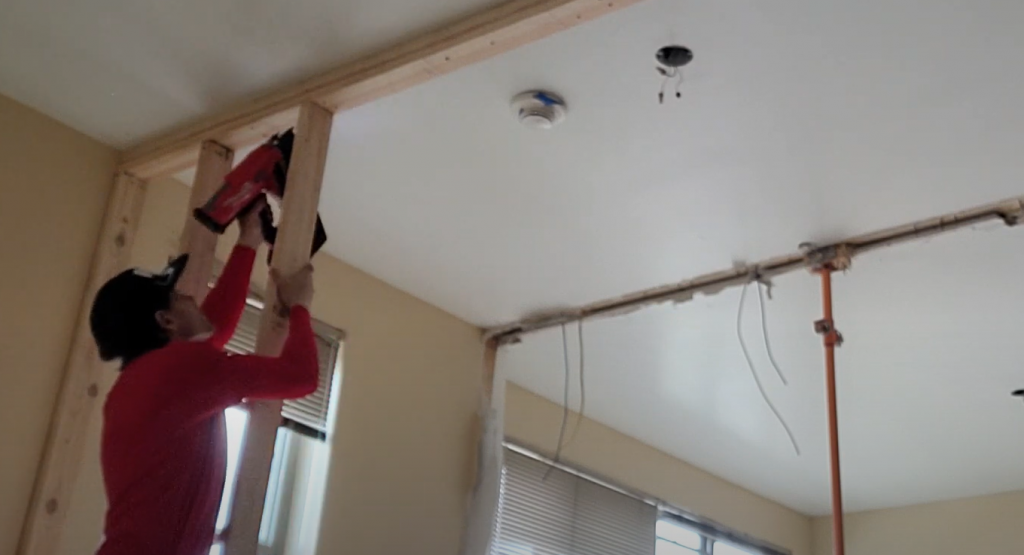
There are two types of gas-powered framing nailers: pneumatic and cordless. Pneumatic models require an air compressor, while cordless models run on battery power.
Air Powered
Air-powered framing nailers are similar to gas-powered models, but they use compressed air from an air compressor instead of a battery. Air-powered models are more powerful than electric ones, but they require an air compressor, which can be expensive.
Pneumatic
Pneumatic framing nailers use compressed air to drive nails into the wood. They are more powerful than electric models, but they require an air compressor, which can be expensive.
Cordless
Cordless framing nailers are powered by a battery, so they don’t require an air compressor. They are less powerful than pneumatic models, but they are more convenient because you can use them without an air compressor.
How To Toenail With A Framing Nailer
Load Your Toe Nailer And Secure Your Boards
Toe nailer cartridges should be used in the same manner as gasoline or oil. Begin by loading the toe nailer with framing nails appropriate for the framing job.
The greater length of a framing nail, the more durable the toenailed structure is going to be.
Mark the position you need the toenailed corner to be. With your shoes on, secure the first piece of wood in place with your toes [2].
Placement Of Framing Nailer Tip
Place the framing nailer on the location where you wish the framing nail to pierce through. This spot should be approximately 3/4 of a distance from the junction of the two boards. The framing nail will go through this area and securely connect the two pieces together diagonally.
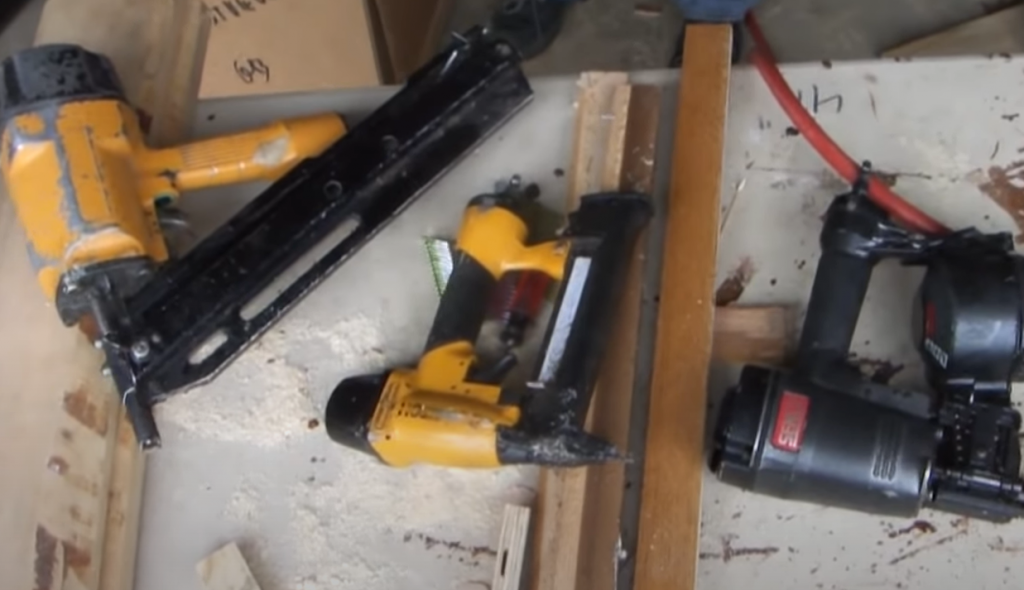
For stability, place your left hand on the board in front of the nailer while your right hand pulls the trigger.
As you pull the trigger, make sure to keep the framing nailer level so that the nail goes through at a perpendicular angle. If not done correctly, this will result in a weak connection between boards or even cause the wood to split.
Also, be mindful not to put your fingers in front of where the nail is coming out as this could lead to serious injury.
Alignment Of Framing Nailer
The next thing you need to do is take a look at the alignment of your framing nailer. The tip of the nailer should be lined up with the center of the board that you are nailing into place. If it is not, then you will want to make the necessary adjustments before proceeding any further.
You can do this by loosening or tightening the screws on the side of the nailer until it is properly aligned. Once you have done this, you can proceed to the next step.
Fire The Framing Nailer
Now that your framing nailer is loaded, aligned, and in the correct position, you are ready to fire it.
To do this, simply squeeze the trigger and hold it down until the nail has been driven all the way into the board.
Once the nail has been driven all the way in, release the trigger and move on to the next board.
Repeat Process On The Opposite Side Of The Board:
- Now that you have nailed one side of the board, it is time to move on to the other side;
- Secure the board in place and repeat the same process on the other side;
- Once again, make sure that you are using the proper nails for the job and that your nailer is properly aligned before firing away;
After you have completed both sides, your boards should be securely in place and ready for whatever construction project you have planned.
Effective Tips on How to Toenail with Framing Nailer
Safety First
Nailing with a framing nailer can save hours during the day. It’s a professional and wonderful device that counts thousands of professionals from all around the world, including in large-scale projects. However, it is also linked to hundreds of injuries each year. As a result, get yourself some protective eyewear and a hard helmet [3].
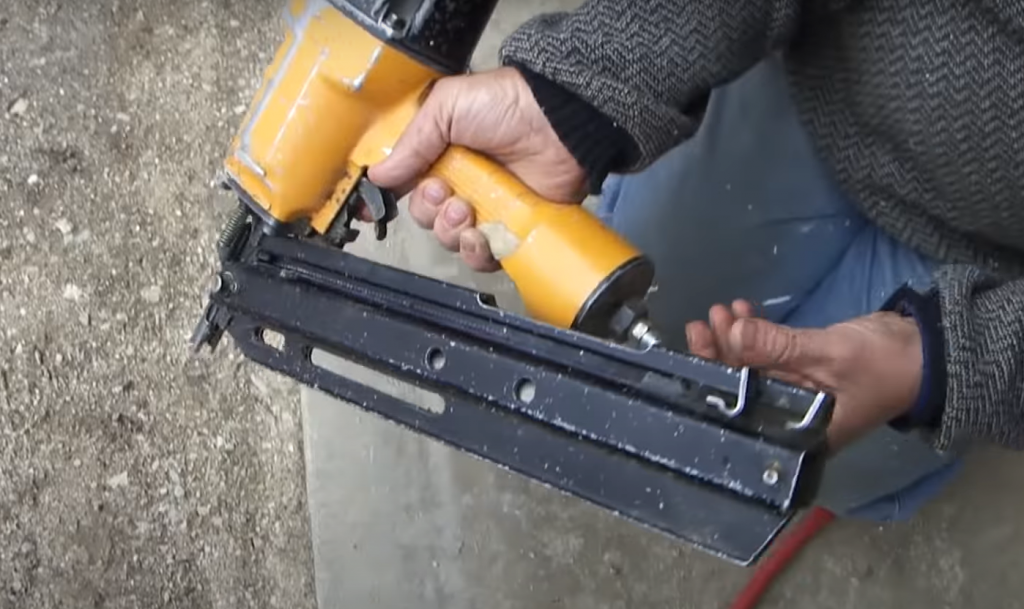
Both of these things are critical, and they safeguard you from flying splinters of wood. They may be found in any hardware shop or online.
Understanding The Machine
After you have all the safety gear, it’s time to understand how the machine works. The first thing that you need to do is load the nails into the magazine. Most models can take around 100-120 nails.
Today’s recent versions do contain both options for experts. They have the option of utilizing it as they see fit.It’s better to choose the training before using this equipment for toenailing if you’re a novice. You should be taught how this machine works, what the most common causes of injuries are, how to inspect and maintain it, and how to use it for specific DIY projects.
Once everything is set, put on your safety gear, and you are ready to start nailing.
The Awkward Angles
You must figure out which types of angles are appropriate for structures. You can learn about toenailing without difficulty if you know the driving forces of the nails.
This is something that most experts know, but it’s essential to understand the basics of how this tool works. If you use a frameless nailer, keep in mind that the force of each shot is different.
The first thing you need to do when nailing at an awkward angle holds the device close to your body. Second, place your opposite hand on top of the wood for stability and better aim.
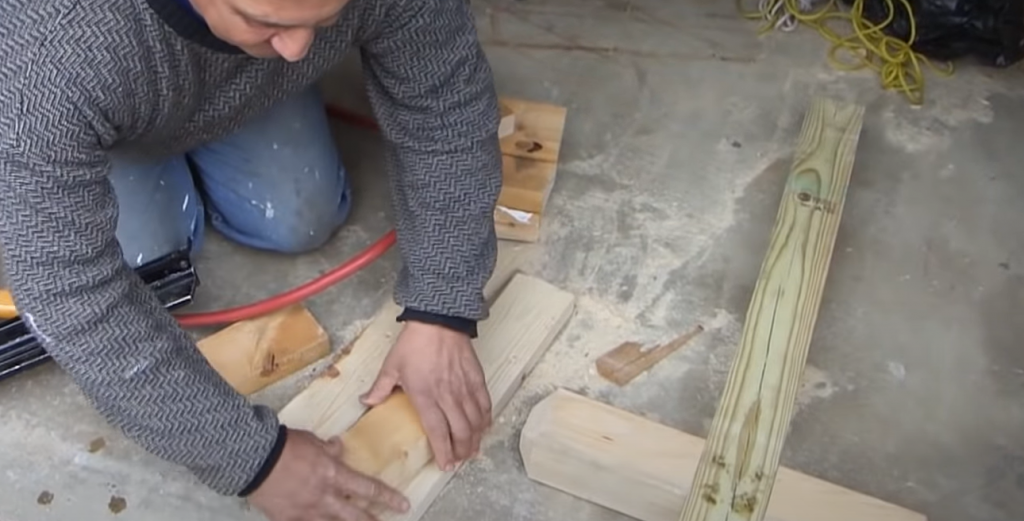
Use your finger as a guide for where the nail should go in. You can use a small piece of tape if needed. After that, align the point where the trigger is with your finger, so you have more control over each shot.
Tips for Beginners
The best way to learn more about your specific model is by reading the user manual.
However, in general, these are some of the most important tips that you should keep in mind:
- Always use two hands when handling a framing nailer;
- Be careful not to put your fingers near the trigger area while someone else is operating the device;
- Keep your finger off of the trigger until you’re ready to shoot a nail;
- Make sure that the area around you is clear before firing a nail;
- Keep the muzzle of the gun pointed in a safe direction at all times;
- Use only the nails that are specified for your particular model of a framing nailer;
With these general tips, you should be able to use your frameless nailer like a pro in no time! Just remember to always put safety first and follow the user manual for your specific model.
FAQ
Can you toenail wall studs?
Toenailing is a technique for fastening wall studs to the sole plate that is frequently utilized. If you’re having trouble keeping the stud in place while nailing, position a 2×4 spacer block behind it. Cut the block to match the distance between wall studs, which may range from 14 1/2 to 22 1/2 inches. Rest the spacer block against the wall and toenail through it into the stud [4].
Is toe-nailing strong?
A sturdy connection is formed when the nail is driven at a 90-degree angle. A pair of nails pounded at opposing 45-degree angles is required. It isn’t suitable for all joints, because the grain of one workpiece must be inclined to the other.
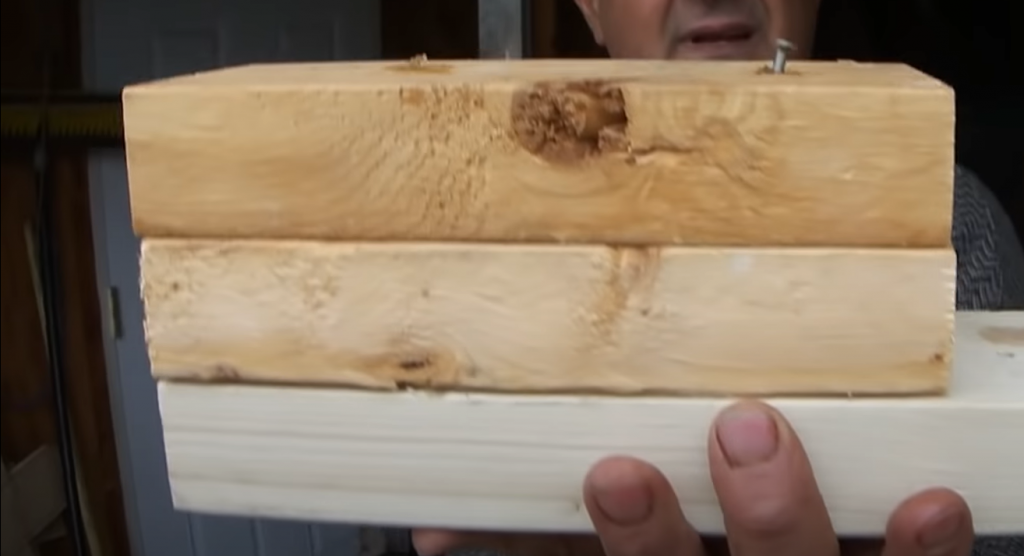
If the grain direction is unaligned, it can loosen the connection. The toe-nailing technique should only be used when necessary [5].
Can I toenail with a nail gun?
Yes, you can. In fact, it’s recommended that you use a nail gun for toenailing because it will drive the nails in at a 90-degree angle.
If you’re using a coil-type nail gun, make sure the nails are fully seated in the magazine before firing. If they’re not, the gun may jam and cause injury.
It’s also important to release the trigger as soon as the nail is driven into the wood. Holding the trigger down will continue driving air through the gun, which can overheat it and damage internal components.
How many nails do you need for a toe-nail stud?
The rule of thumb is to drive four nails into either side of the 2×4 (with 8ds) and two nails at 90 degrees (with 16ds).
The first two nails are driven into the face of the stud at an angle (typically 30-45 degrees) to keep it from slipping out while you’re driving in the other nails.
The second set of nails is driven perpendicular to the face of the stud into its edge, which locks it securely in place [6].
How far should a nail penetrate?
A minimum of 1/2 inch of penetration is required when nailing very thin materials into wood. If the small thing is holding a big item (such as a metal bracket that will hold a 75-pound bucket of buffalo chow), the nail should penetrate 1 1/2 to 2 inches.
For a 16d common nail, the minimum embedment is 3 inches (0.76 cm).
For a 20d common nail, the minimum embedment is 4 inches (0.102 m).
If you’re using a pneumatic nailer, make sure the nails are fully seated in the magazine before firing. If they’re not, the gun may jam and cause injury.
Are screws or nails better for framing?
The general rule is that screws are better for framing than nails. They’re stronger and have more holding power, so they’re less likely to come loose over time.
Nails are faster and easier to drive into the wood, so they’re often used for initial construction. But if you’re planning on keeping your frame for a long time, it’s worth taking the extra time to use screws.
What is blind nailing?
Blind nailing is when a nail is driven into the wood at an angle so that the head is not visible from the surface. It’s often used for trim work because it gives a neater finish.
To blind the nail, hold the piece of trim in place and drive the nail into it at a 45-degree angle. The head of the nail will be hidden by the trim.
If you’re using a pneumatic nailer, make sure the nails are fully seated in the magazine before firing. If they’re not, the gun may jam and cause injury. Also, be sure to release the trigger as soon as the nail is driven into the wood.
What is the difference between a framing nail gun and a finishing nail gun?
A finishing nail gun is smaller and has a shallower magazine, so it can’t hold as many nails. It’s also designed to drive nails into softer woods, so the tip is less likely to damage the wood.
A framing nail gun is larger and has a deeper magazine, so it can hold more nails. It’s also designed to drive nails into harder woods, so the tip is more likely to damage the wood.
Both types of nail guns can be used for either purpose, but it’s important to choose the right tool for the job. If you’re not sure which one you need, ask a salesperson or look for reviews online.
What is the best angle for framing nailer?
The best angle for a framing nailer is 30-45 degrees. This angle will keep the nails from slipping out while you’re driving in the other nails.
If you’re using a pneumatic nailer, make sure the nails are fully seated in the magazine before firing. If they’re not, the gun may jam and cause injury. Also, be sure to release the trigger as soon as the nail is driven into the wood.
Why do framing nailers have different angles?
It’s pointless to use a nail that doesn’t match the angle of the nailer. A 28-degree nail won’t fit in a 21-degree nailer for example. The more acute the angle, the easier it is to operate a nail gun, allowing users to squeeze it into tight spaces [7].
What is skew nailing?
Toenailing, also known as skew-nailing, is the driving of a nail at an angle of roughly 45 degrees to join two pieces of wood together. Toenailing a wall stud to a sole plate in stud framing is a frequent example [8].
This is the most secure way to join two pieces of wood together. The angle of the nail prevents it from being pulled out easily.
Toenailing is also used to attach trim and molding to a wall. The nails are driven at an angle so that they’re hidden by the trim.
How do you nail 2×4 side by side?
If you’re nailing two boards side-by-side, it’s important to use a nail that’s long enough to go through both boards. Otherwise, the nails will pull out easily.
You also need to make sure the boards are aligned properly before you start nailing. If they’re not, the nails will bend and the joint will be weak.
Start by driving a few nails into one board. Then, hold the second board against the first and drive nails through both boards. Be sure to keep the boards flush so that the joint is strong.
Useful Video:Toenail framing a wall with my Milwaukee m18 framing nailer make job so easy and easy to use
References:
- https://www.bobvila.com/articles/best-framing-nailer/
- https://bradnailer24h.com/how-to-toenail-wood-toenailing-tips/
- https://toolzguide.com/effective-tips-on-how-to-toenail-with-framing-nailer/
- https://www.thisoldhouse.com/woodworking/21019379/the-right-way-to-toenail
- https://www.bobvila.com/articles/1202-nailing-techniques/
- https://machinelounge.com/what-size-nails-for-toe-nailing-2×4/
- https://www.bobvila.com/articles/best-framing-nailer/
- https://en.wikipedia.org/wiki/Toenailing
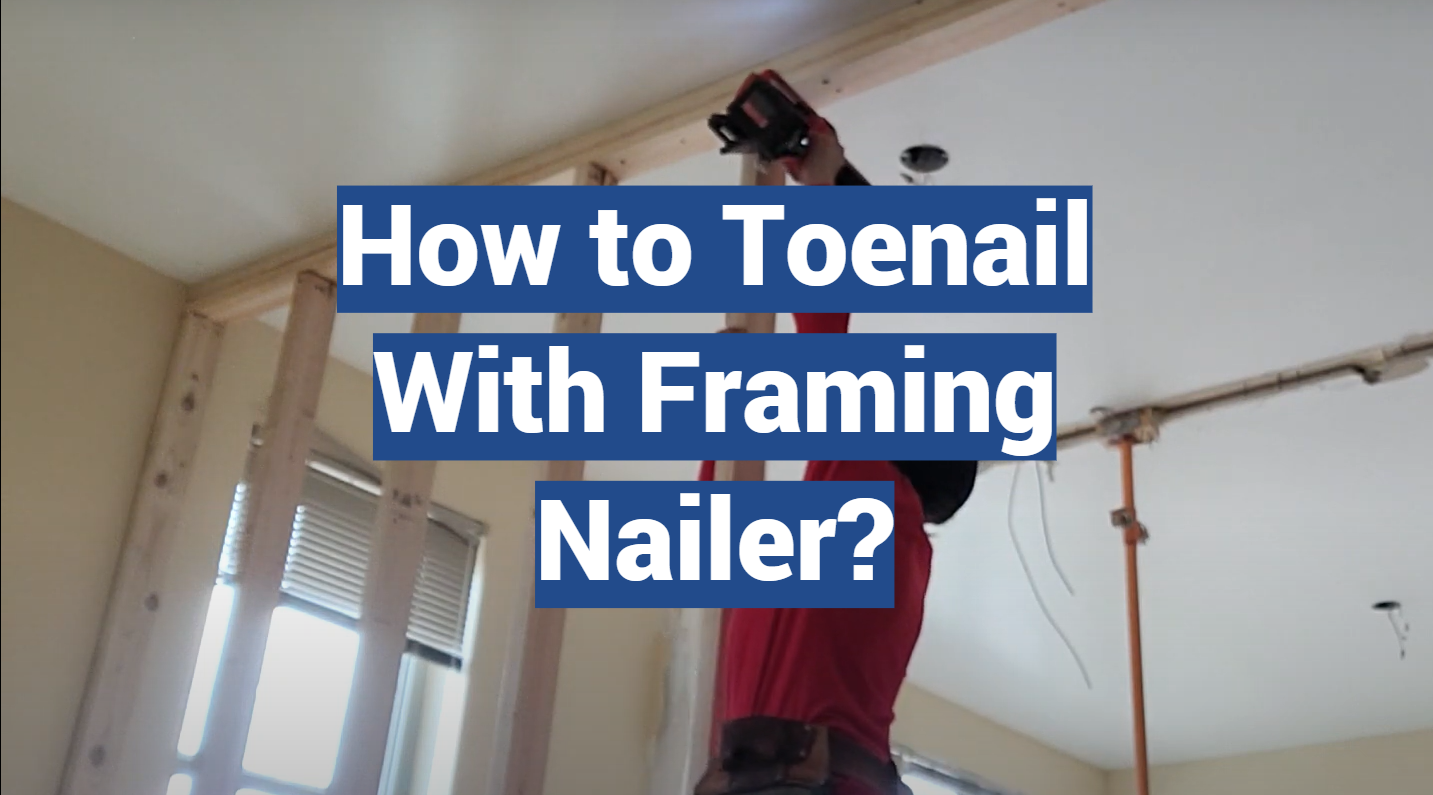
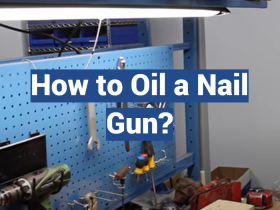
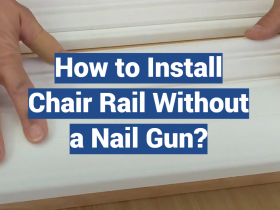
Leave a Reply